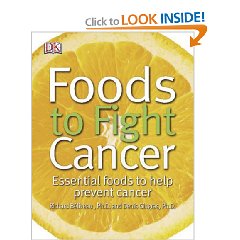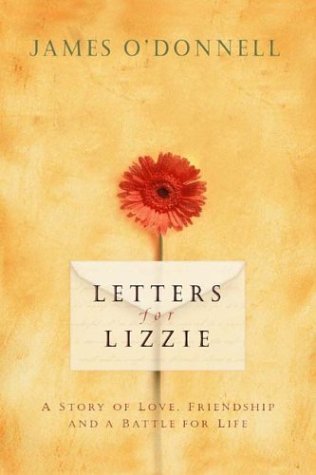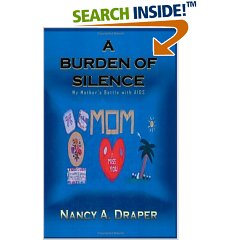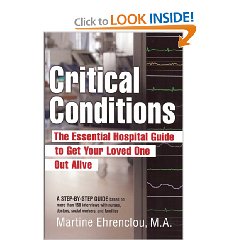 = More of what I love in life…
= More of what I love in life…
“My body and soul do not function as separate parts. I
pieced together a new self, unified and wonderfully alive.”
~Stephanie Byram
“Knowing Stephanie” is a beautiful gift and I am amazed
at how a woman I will never meet in this life has affected my
life in a profound way. I am also deeply touched by the sheer
beauty of the souls who surrounded Stephanie during a time when
she became so very human and vulnerable.
Stephanie had a dream for her life. She was pursuing a career
and wanted to start a family when her life turned into a
nightmare instead of the dream she had envisioned.
After becoming concerned about a painful, swollen breast, all
the tests showed the presence of a tumor. At the young at of 33,
she was diagnosed with a highly aggressive breast cancer.
Doctors said she only had a 50 percent chance of surviving five
years.
Stephanie refused to see this situation as an obstacle to her
dreams. Although she struggled with cancer for eight years, she
decided to get married, buy a home, earn her Ph.D. and even
travel the world. Stephanie didn’t give up on life because
life decided to take her on a path that would show her the
limits of her own endurance.
Knowing Stephanie is a combination of Charlee Brodsky’s
photographs and Stephanie Byram’s words. There is also an
wonderful essay by Jennifer Matesa to give us a story of the
medical journey without being overly clinical.
In “Reconstructing a Life” we learn how Stephanie found
out about her cancer and how chemotherapy works. We finally
understand what causes the nausea and why patients undergoing
chemo go bald and experience neutropenia.
In this collaborative effort, you will meet Stephanie and
learn about her struggles. You will see how she took charge of
her own life and relive the experiences of chemotherapy and
doctor visits through photographs. There are also beautiful
notes from her mother, father and niece. She makes of list of
everything her friends and family did to help her including
telling her is was “OK to cry.”
Stephanie had weaknesses and strengths and both are portrayed
in this story. We are invited to share her love of gardening,
the feelings she experiences as she wondered how men would
accept her after her surgery, how she is suddenly confronted
with her mortality and how she uses the experiences in her life
to heal instead of withdrawing into the darkness of despair.
A portrait of a woman who refused to see cancer as anything
less than an opportunity to embrace life in all its beauty and
sadness and learn from the experience. Her optimism and
determination is an inspiration to us all.
“What is my future: love, laughter, gardens, family,
friends, spirituality, travel …more of what I love in life. I
surround myself with positivity, gentleness, challenge, and
hope. I be, I am, until I pass, as we all shall.” ~ Stephanie
Byram

Foods to Fight Cancer
 Taking preventative measures...
Taking preventative measures..., May 19,
2009
"Analyses conducted by independent laboratories showed that
the quantity of resveratrol present in the capsules studied was
so small that a person would have to consume thousands of them
just to ingest the equivalent of the resveratrol contained in a
single glass of wine." ~ pg. 169
What action can you take to prevent cancer? Is it really as
simple as eating certain types of food and avoiding others?
Richard Beliveau and Denis Gingras believe this to be the case.
In "Foods to Fight Cancer" they present a fairly
simple plan of action, eat more fruits and vegetables,
especially the ones they recommend.
The initial explanations in this book bring a new understanding
of what cancer actually is. Then the rest of the book is
dedicated to explaining how certain foods like citrus fruits
help you fight against cancer. Throughout this book you will
also find helpful diagrams and pictures that make the topics
easy to understand.
If you are worried about pesticides you can always buy organic
fruits and vegetables but the authors believe that the benefits
of regular fruits and vegetables outweigh the risks associated
with tiny amounts of pesticides.
There are some surprising facts like how a baked potato has four
times the antioxidant activity of broccoli. Then, if you think
frozen vegetables are better than fresh the authors explain how
the benefits are cancelled out due to a high-temperature
blanching process.
If you need some good reasons to eat more vegetables and fruit
this book supplies quite a few. As you read through this book
you will gain a sense of empowerment. All the recommended foods
are delicious and easy to prepare.
~The Rebecca Review
A Husband's Perspective

Letters for Lizzie
 A
Journey of Compassion, August 10, 2005 A
Journey of Compassion, August 10, 2005
"Cancer teaches you harshly to think short-term, holding
everything loosely." ~James O'Donnell
It is difficult enough to know how to react when a someone you
love is diagnosed with cancer and even more difficult to face
the reality of a friend or relative entering treatment for this
devastating disease which tests the very fabric of existence.
Letters for Lizzie explores even deeper struggles as a man's
heart makes a transition from wanting a divorce to fighting for
his wife's life with every ounce of strength he possesses.
Letters for Lizzie is a journey through a spiritual crisis where
James O'Donnell is forced to reevaluate his life when Lizzie is
diagnosed with advanced breast cancer. Together they travel
through sickness and sorrow from Christmas in 1994 to July 2,
1996. While this book is filled with thirteen letters, James
O'Donnell also provides a setting for each reading experience.
At first you may question James' decision to relocate his family
and take a cut in his salary to become a teacher, but as the
story unfolds, you start to realize how God works in amazing
ways to put you in a place you need to be so you can be loved
and nurtured. Not only do they move close to an Advanced
Research Center, the community they live in supports them and
cares for them through their struggles with frustration, anger
and failed expectations.
As doctors struggle to keep Lizzie alive, she continues to
weaken and yet manages to find the strength to write Letter
Eight. Her strength and positive attitude wanes at times and yet
even in this dark time she has a deep faith and commitment to
God. In her letter she says:
I know it has cost each of you dearly to ride this wild roller
coaster with us, yet I am convinced that it is your prayers and
God's mercy that have carried us through this ordeal so far, and
I can't begin to thank you. The best way I know how is to share
with you the wonderfully ordinary life we now live, which we no
longer take for granted. ~Lizzie
Written from a husband's perspective, James O'Donnell deftly
describes the destructive qualities of the cancer diagnosis and
gives insights into how to fight and how to surrender. I was
surprised by the life affirming qualities of this work and how a
story of cancer could be one of the most beautiful love stories
I've ever read.
Tomorrow my father will find out what it will take to fight his
cancer and this book has helped me to understand how I should
react, what I should say and how my life will change in the
coming months and years. Like so many, I never thought cancer
would invade my family and just the knowledge of illness causes
you to reevaluate your priorities.
If you are struggling with the emotional aspects of dealing with
a cancer diagnosis or you are in the midst of fighting this
disease, this book will bring comfort to your heart. In our
world, where uncertainty is certain, this book provides a
peaceful knowledge of God's care for us even when we think he
has disappeared. James O'Donnell's conclusions are beautiful and
he provides insight into troubling conflicts and difficult
interpersonal relationships. In the end, kindness is what
matters most and our presence in the life of someone who is
suffering might be what is truly needed, even if we don't know
what to say.
~TheRebeccaReview.com

Flor-Essence Tea
 Gentle
Detox for the Entire Body/ Cancer Tonic, October 3, 2005 Gentle
Detox for the Entire Body/ Cancer Tonic, October 3, 2005
This tea is a cancer tonic that was originally popularized by a
Canadian nurse, Rene Caisse. She originally called it "Essiac"
which was her name spelled backwards. She received the original
formula from a woman who survived breast cancer after sipping a
cancer tonic given to her by the Ojibway Indians. Now more than
200,000 people take this tea each month.
When I first ordered this tea I thought it would be in small tea
packets for daily use, but there are actually three large 0.74
oz/21g packets of "Dry Herbal Tea Blend."
This box contains:
3 packets of Herbs - powder mixed with some chopped up herbs
that look like tiny pieces of say rhubarb
1 sheet of instructions for how to use and make the tea
After trying to make the tea the first time, the second packet
was so easy to make. You simply boil the ingredients in water
and then let the tea sit out on the counter (I put it in Pyrex
container and covered it with plastic wrap) for 10 hours. This
is great to do overnight or you can start the process early in
the day. Once the tea has been made, it can be stored in the
refrigerator.
When the instructions said to "chew" the tea before
swallowing, I could not understand why. Then, when trying the
second tea packet, there were many small pieces of herbs that
were sort of fun to chew up before swallowing.
The taste of this tea is somewhat interesting when it is
undiluted. They recommend diluting this with water, but I found
cranberry juice to be far more appealing. I could not swallow
the tea as well without mixing it with an equal amount of
slightly flavored water or a juice.
Results you can expect from using this product:
Increased Energy - I feel that this removes toxins from my body
because my mind seems more clear.
Increased Blood Flow - Better skin tone
Decrease in the change of illness - The body can get rid of
foreign items when detoxing.
Condition this product can help include: Cancer, Thyroid
problems, emotional issues (anger issues) allergies, PMS, Ear
Infections (especially in children) Diabetes, insomnia.
The Ingredients:
Kelp
Burdock Root
Slippery Elm Bark
Turkish Rhubarb Root
Red Clover
Sheep Sorrel
Watercress
Blessed Thistle
One of the good side effects ( I haven't noticed any negative
side effects) was a calm descending on me so maybe this does
help to clean out negative emotions. This could be because of
the red clover this mix contains.
Dosage Recommendations (see packet, but this gives you an idea):
For adults - 2 ounces of the tea diluted with water ( I like
juice)
For Children - Ask your doctor, they say 1 ounce twice daily.
For Pets - They have various weights and ounces and you can put
the tea on pet food.
When using this tea, you do have to stir it up a bit. It will
look like it has divided into two mixtures. One is clear and the
other is more mucilaginous (from the Slippery Elm bark and
Burdock root) with fine sediment. Once you mix it up it is quite
palatable.
To find out more about this product, please consult with your
Naturopath. From articles I've read on the product, it can help
give your body support during chemotherapy and radiation. Please
talk to your doctor before taking this natural remedy.
Once you get used to taking the tea morning and evening it is
almost something to look forward to. If you don't want to make
the tea, there is also a bottle of liquid you can order.
~The Rebecca Review

Seasons of Goodbye
 Caregiver's Journal, May 17, 2006
Caregiver's Journal, May 17, 2006
The highest form of wisdom is kindness. ~Talmud
Robyn Feld has created a journal for caregivers to help them
work through sadness, frustration, confusion and isolation.
Through this book you can learn about the infinite number of
behavior variations a patient may experience.
The pages are green, blue, gold and white representing Spring,
Summer, Autumn and Winter. The chapters include:
Spring - remembering the person before AD
Summer - the diagnosis
Autumn - the steady decline
Winter - the sad reality
In the Spring section there are places to write about family,
children, celebrations and holidays, friends, education,
childhood memories and memorable travels. This section has no
notes and is mainly a journal entry section.
Summer explores dilemmas like the patient not being able to
drive and how the comfort of familiar things like taking care of
a garden or maintaining friendships can help even when memory is
failing. The section on obsessive behaviors explains the
frustration of memory loss and there are real-life examples.
Sections on handling money and getting support from the medical
community make this book practical.
Autumn addresses a series of challenges and the examples given
are very comforting. As people deal with the challenges they
tell how they overcame them and this gives caregivers ideas for
how to address issues they are facing. I became very emotional
while reading the "Language Challenges" section. To
lose your ability to speak and not to be able to tell people
what you need or want seems to be the ultimate in frustration
for AD patients. The necessity of keeping up with doctor's
visits and tests is brought home rather starkly in one story of
a man who could not tell his caregivers how he was feeling. By
reading this book you can become aware of these issues in order
to make the patient more comfortable and cared for. Paranoia,
hallucinations and delusions are also discussed. Especially
helpful sections on creative care, caring for the caregiver and
grief counseling make this chapter especially helpful.
When you are facing choices at the end of a patients life, the
Winter chapter explains the symptoms of decline, medical
decisions that must be made and choices like hospice care or
faith-based comfort. Many of the issues in this chapter like the
issue of a feeding tube would be best to discuss with the
patient as soon as a diagnosis is made. By reading this chapter
you learn so much about the true feelings of the family and how
they either regret decisions or were at peace. The last section
includes a place to put phone numbers and addresses.
Overall this seems an essential guide for caregivers because it
is always best to know what might occur so you can be prepared
for all circumstances and challenges.
~The Rebecca Review

HIV/AIDS - One Woman's Struggle
 How a Transfusion Changed a Mother's Life, May 23, 2006
How a Transfusion Changed a Mother's Life, May 23, 2006
"I want you to write about me having AIDS because I don't
want anyone else to suffer in silence like we have."
~Nancy's Mom
When Nancy A. Draper's mother underwent a bypass surgery, she
received a transfusion that turned out to be HIV contaminated
blood. At the age of 66 she was diagnosed with AIDS and battled
with her illness until she was 69. Before Nancy's mother died,
she asked her to write a book so that others would not have to
suffer in silence. Through "A Burden of Silence" Nancy
gives her mother a voice and writes with the care and concern of
a loving daughter.
"Hundreds of thousands of people like my mother who went
into the hospital trusted doctors who assured patients that the
blood was safe. So many lives were lost because of a lag in
testing by blood banks throughout the United States." ~ pg.
139
This book is not only about Nancy's mom's illness, but also
about the choices she made while living, like taking a painting
class. In order to deal with her diagnosis, she relied on a
variety of useful tools like guided meditation and breathing
exercises. Realistic conversations and family issues keep this
book engaging and heartwarming.
Even in a time of extreme stress for a family dealing with AIDS
they find time to connect and care for each other. Through the
sadness of the diagnosis, we learn about the realities of caring
for an AIDS patient and the struggles are at times recorded in a
realistic diary style that takes the reader on a journey from
diagnosis to the sad yet somewhat poignant moments of goodbye.
In the end, this sad story is a beautiful gift to the world and
will be especially appreciated by anyone in a similar situation
or by anyone who wants to develop more compassion and
understanding.
~The Rebecca Review

Critical Conditions
 Life Saving Advice
Life Saving Advice, August 5, 2009
"Patients with involved family members get better
care." ~ pg. 101
I wish I would have had this guide when my husband, father and
grandmother were in the hospital. Fortunately even with the
shocking statistics they made it out of the hospital alive. I
believe this was in part because family members rallied around
the patient each time and made sure the patients were receiving
the best care possible.
When your family members or friends end up in the hospital it is
important to remember that each year 2 million patients get an
infection and about 100,000 people die from these infections. It
may seem intrusive to ask a physician or nurse to wash their
hands but it could save lives.
Martine Ehrenclou interviewed nurses, physicians, social
workers, psychologists and family members to discover the best
ways to care for a patient. She lists many of the pertinent
questions you should ask physicians and nurses to prevent
medical errors. This book also has a section where you can write
down all the information so you can keep track of medications
and the prognosis. When conditions change you can then read and
compare notes to make sure the patient is actually getting
better instead of worse.
"Critical Conditions" is written with a sense of care
and concern. The advice goes beyond helpful hints and deals with
life saving strategies. There is some good advice about not
having too many visitors in the room at the same time as it can
interfere with patient care. Since the patients mental health
may also be at stake it is also important not to fight about
their care in front of them.
Since by the year 2020 there will be a nationwide shortage of
nurses this book will become even more important. This is the
real reason why nurses cannot at times respond immediately to
the call button when patients are in dire need. They are
overwhelmed and overworked already and things seem like they are
just going to get worse.
Martine Ehrenclou presents a book that will encourage family
members and friends to be more active in the patients care.
There is no need for patients to suffer needlessly or to be the
victims of medication errors.
Highly Recommended!
~The Rebecca Review
|